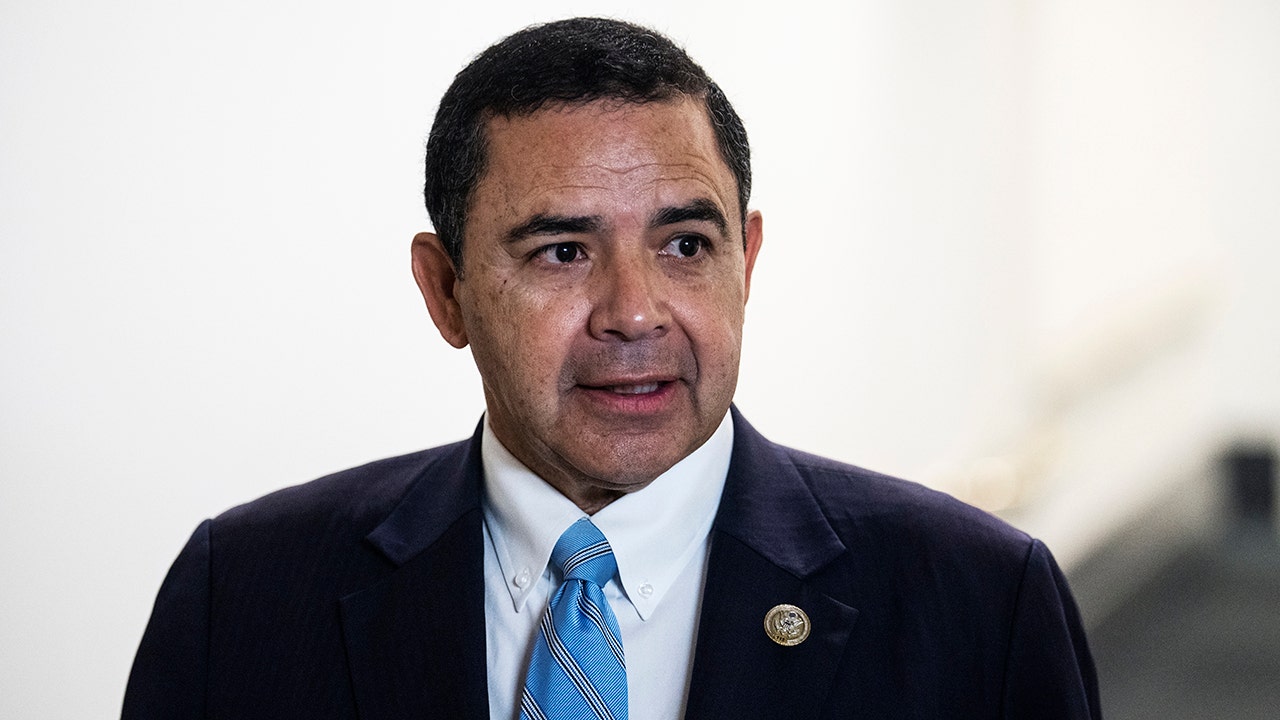Iowa
‘Iowa Nice’ should include caring for our neighbors, yes?

Do we still have hope and dreams for Iowa nice? Let’s keep dreaming of neighbors who care.
Jimmy Carter said, “If you don’t want your tax dollars to help the poor, then stop saying you want a country based on Christian values, because you don’t.”
Can we apply this to Iowa? If you don’t want to feed kids, then stop thinking of yourselves as Iowa nice.
What has happened to Iowa nice?
What has happened to Iowans caring about neighbors?
Let’s take a deep breath and think about being nice.
My concern and rant started when Gov. Kim Reynolds announced Iowa would not be taking money for the child summer nutrition program. We said no to over $20 million of federal summertime food assistance. We said no to feeding 240,000 Iowa children who would qualify. USDA data shows that 1 in every 11 Iowa children face hunger. The $40 a month per child can be the difference between a hungry kid and a nourished one.
The reason Reynolds gave for saying no was “An EBT card does nothing to promote nutrition at a time when childhood obesity has become an epidemic.”
If we are concerned about obesity, let’s find ways to raise the taxes on junk food. Let’s find ways to help farmers raise food that feeds Iowans instead of ranting about supporting corn for ethanol. Iowans import 90% of their food. A typical carrot travels 1,800 miles to reach your dinner table. Iowans eat 25.9 million pounds of carrots each year and only 5% are grown in Iowa. Let’s have the governor start to give out carrot and other vegetable seeds and make sure there are community gardens for planting them. Let’s start pushing for farm subsidies that support food agriculture.
I wasn’t done ranting about Reynolds’ condescending approach to hungry kids when the caucuses happened. Iowans came out to support Donald Trump.
Why would nice people support someone who is trying to divide us? Why would nice people support someone who brags about misogynistic deeds? Why would nice people not see racism as he talks about “immigrants poisoning the blood of our country”?
According to AP VoteCast, around 4 in 10 Republican caucusgoers chose immigration as the most important issue facing us. Nearly three-quarters say immigrants are a negative for the country. “About 9 in 10 in the survey back building a wall along that border.” We seem to have forgotten most of us are descendants of immigrants.
Iowa used to be welcoming. We liked to brag about Robert Ray welcoming the Tai Dam in 1975. Later Ray welcomed the boat people. He had a heart. “I learned what was happening and it was just tragic,” Ray recalled. “These frail little boats with people trying to save their lives and get away were breaking apart and people were dying. … And once again, I thought, ‘We’ve got to do something to help that situation.’”
I recently found out our state representatives passed a resolution in support of Israel’s military action. Do Iowans care about the hungry and dead children of Gaza?
I was ready to give up hope, but I was reminded of Martin Luther King Jr.’s 1967 Christmas sermon at Ebenezer Baptist Church. King said, “If you lose hope, somehow you lose the vitality that keeps moving, you lose that courage to be, that quality that helps you go on despite it all. And so today I still have a dream.”
Do we still have hope and dreams for Iowa nice? Let’s keep dreaming of neighbors who care.
Now let’s all splurge on some Ben & Jerry’s ice cream. They are the first company to publicly call for a cease-fire in Gaza.
As we eat ice cream (those of us who can afford it) let’s think of ways we can redefine and reinstitute Iowa nice.
Jane Yoder-Short lives in Kalona.

Iowa
Inside Iowa Politics: New way to make sure your neighborhood has enough drinking water?

DES MOINES, Iowa (Gray TV Iowa State Capitol Bureau) – Droughts, chemical runoff, changing weather patterns and population growth have triggered a growing warning to Iowa residents, political leaders and community developers about the importance of reliable access to clean, plentiful drinking water. A new central Iowa entity could provide a framework for other communities in the state for a regional commitment.
A newly formed entity called Central Iowa Water Works unites a dozen water providers. CIWW will serve as a regional utility for water production and expects to provide water for nearly 600,000 residents.
Last month, CIWW chose retired attorney and energy consultant William Smith to serve as its interim executive director. Read the announcement here.
CIWW will assume ownership of the current water treatment and supply systems in the region (most were operated by Des Moines Water Works). The local water entities would continue to be responsible for billing and customer service.
Follow the timeframe and evolution of Central Iowa Water Works here.
Here are the dozen local providers that joined Central Iowa Water Works:
Here is the message that Polk City posted on its website for residents as CIWW formed:
“Polk City has been purchasing water from Des Moines Water Works (DMWW) since 2003. Polk City can produce some of our own water, and we are currently producing about 40% of the water we sell to our residents and purchasing the other 60% of water from DMWW. Unfortunately, as Polk City’s demand for water continues to increase, the percentage that the city can produce continues to decrease. The city produces water at a lower cost compared to what we purchase water for with DMWW. The 40% & 60% ratio was consistent up until a few years ago. In the past few years, the city has had a number of events, where our ability to produce water was either lower, or unavailable, and we have had to fully rely on purchasing water from DMWW.”
Water shortages have not been as severe in Iowa as they have been in western states like California. However, Clarke County has suffered after several years of drought. Area leaders had to resort to asking residents to drink bottled water as they searched for a long-term solution to the challenge.
The CIWW framework is unique to Iowa in the way it has united numerous local governing authorities into a regional water body, which could give it a more centralized focus as it determines how to meet the needs of future generations, how to minimize nitrates in the water system and how to work with federal elected officials and agencies as it seeks future funding.
About the author: Midwest native Dave Price is Gray Television’s Iowa Political Director for 10 stations that broadcast in the state and has been covering local, state and national politics from Iowa since 2001.
He has written two books about the Iowa Caucuses (“Caucus Chaos” and “Caucus Chaos Trump”). Email him at dave.price@gray.tv. Follow him on X (Twitter): @idaveprice Meta/Facebook: DavePriceNews Instagram: idaveprice and LinkedIn: Dave Price.
Dave welcomes your thoughts on what answers to seek from politicians and what issues challenge our communities.
Copyright 2024 KTIV. All rights reserved.
Iowa
Planting progress stalls in Iowa

Don Friedrichsen is typical of many Iowa farmers these days when he discussed planting progress last week.
“We haven’t turned a wheel for two weeks,” says the 2008 Iowa Master Farmer, who farms with family near Holstein.
This was largely the story statewide, as fieldwork activities were limited. Rainfall across the state limited Iowa farmers to just 1.4 days suitable for fieldwork during the week ending May 5, according to the USDA National Agricultural Statistics Service.
Topsoil moisture condition across the state was rated as:
-
Sixty-five percent adequate
The Iowa Department of Agriculture and Land Stewardship reported just 8% of Iowa’s expected corn crop was planted during the week ending May 5, for a total of 47% planted. This meant progress went from ahead of average to lagging two days behind both 2023 and the five-year average, Seven percent of the corn crop has emerged, three days ahead of last year and one day ahead of the average.
Soybean planting progress fell behind the previous year, with 5% of Iowa’s expected soybean crop planted during the week ending May 5, for a total of 30% of the expected soybean crop planted, two days behind last year. Four percent of the soybean crop has emerged.
Progress by area
Friedrichsen’s experience coincides with what Angie Rieck-Hinz is seeing. As of midweek, the Iowa State University Extension field agronomist says farmers had not turned a wheel for the past 12 days in north-central Iowa. Several days will likely pass before field activity resumes.
The good news is in her area, she estimates 75% of the corn is planted, along with 40% of the soybeans. Corn and soybeans that were planted April 15 and earlier have emerged, but they did take three weeks or more to do so.
So far, no major maladies have been reported in Rieck-Hinz’s area, with the exception of a few alfalfa weevil calls in north-central Iowa.
Further east in northern Iowa, Gentry Sorenson reports the same for fieldwork status. As of the middle of last week, the ISU Extension field agronomist reports the area he serves received between 3.5 and 5 inches of rain.
Some had difficulty applying preemergence applications of herbicides, due to high winds when fields were dry at planting [before all of the rainfall]), he says.
Black cutworm trapping is also underway, which has revealed significant moth flights in Hancock and Buena Vista counties.
In the central Iowa region that Meaghan Anderson covers, rain overnight last Monday stalled out any fieldwork that was occurring. The ISU Extension field agronomist estimates 0.5 to 2 inches of rain fell that night. When this is accompanied by more midweek rainfall, most farmers will be out of the field until early this week at the earliest.
“I believe some farmers are getting anxious as we approach that mid-May time frame, where yields start to drop off,” she says.
Meanwhile, “Weeds have taken advantage of the rainfall and are germinating,” she says.
“I’ve seen many of our typical summer annual weeds up already in areas that had yet to be treated with herbicide: waterhemp, foxtails, woolly cupgrass and morning glories,” Anderson says.
She’s also observed some injury from preemergence herbicides on early-planted soybeans. However, she doesn’t know how widespread or problematic it will be. She says it’s the first year in a while when injury potential could occur due to factors such as early planting under dry conditions coupled with rainfall closer to emergence.
Fieldwork also has been limited in the east-central Iowa area that Rebecca Vittetoe covers.
“Some folks did get in the field between rain events, especially in areas that received less rain,” says the ISU Extension field agronomist. “Hopefully, the weather cooperates, and we can get back in the fields soon.”
Farmers in the southeastern Iowa area that Virgil Schmitt, ISU Extension field agronomist, covers have also been at a standstill. This is especially true for those south of Highway 92.
“It will be a while before they get back in the field, so there is some nervousness there,” Schmitt says. “The prevented-plant for crop insurance question is starting to surface.”
However, planting has progressed well in the northern counties Schmitt covers. He reports early planted corn and soybeans are emerging.
“From a pest [weeds, insects, diseases] perspective, my concern is bean leaf beetles on the first emerging soybeans in an area or soybeans located near alfalfa fields,” he says. “Insecticide seed treatments should manage bean leaf beetle well, but the fields still should be monitored.”
More ISU Extension field agronomist observations can be found here.
Iowa
Protestors march across Univ. of Iowa campus over expanded ground operations in Rafah

IOWA CITY, Iowa (KCRG) – On May 12th, dozens of people marched through the University of Iowa campus from Hubbard Park to Carver-Hawkeye Arena, protesting after Israel ordered more evacuations in a southern Gaza city.
Iowans for Palestine” and “Students for Justice in Palestine” organized today’s protest.
It’s in direct response to an order on May 11th, from Israel, warning 100′000′s of civilians in the city of Rafah to evacuate, as it plans to expand ground operations there.
They’re also continuing to push for the university to divest, or cut ties with any companies that are connected to Israel’s military.
“We want people to keep in mind, where they work, what university they graduated from it’s all connected to Israeli war machine and so until we disclose and divest from that its going to keep happening.” said Clara Reynen who took part in the protest.
Organizers say they plan to continue holding protests until demands are met.
The arena was where many of the university’s graduation ceremonies were held on Sunday.
Copyright 2024 KCRG. All rights reserved.
-

 Education1 week ago
Education1 week agoHow Counterprotesters at U.C.L.A. Provoked Violence, Unchecked for Hours
-

 World1 week ago
World1 week agoBrussels, my love? Champage cracked open to celebrate the Big Bang
-

 Politics1 week ago
Politics1 week agoAustralian lawmakers send letter urging Biden to drop case against Julian Assange on World Press Freedom Day
-
News1 week ago
A group of Republicans has united to defend the legitimacy of US elections and those who run them
-

 Politics1 week ago
Politics1 week agoHouse Dems seeking re-election seemingly reverse course, call on Biden to 'bring order to the southern border'
-

 World1 week ago
World1 week ago‘It’s going to be worse’: Brazil braces for more pain amid record flooding
-

 Politics1 week ago
Politics1 week ago'Stop the invasion': Migrant flights in battleground state ignite bipartisan backlash from lawmakers
-

 Politics1 week ago
Politics1 week agoDemocratic Texas Rep. Henry Cuellar indicted by DOJ on conspiracy and bribery charges

















